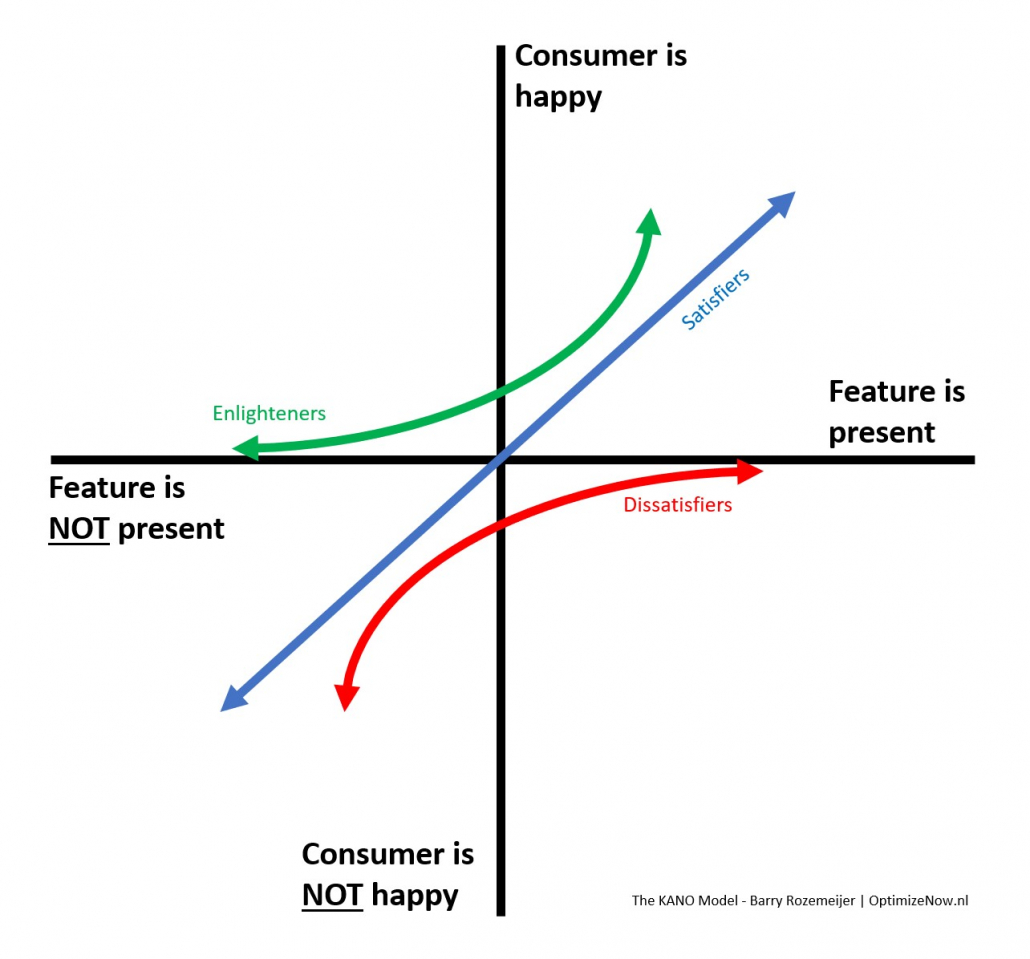You might recognize this…
Life as a (IT) manager or Product owner isn’t always easy… With so many people asking for so many different things, it can be quite overwhelming to prioritize everything and keep everybody happy…
It’s easy to loose track and/or to miss out on something important. And probably someone will complain because they feel they are the most important one out there.
How to balance your teams’ workload in a way that you know you are doing the right things first?
That’s why I love the KANO model as a quick and easy prioritization model, especially because it takes the consumers needs as the basis, and add value accordingly.
The KANO model was defined by the Japanese Professor Noriaki Kano, specialized in Quality Management and Customer Satisfaction and became part of the LEAN 6 Sigma Toolkit.
Although the models has many more layers of depth that can be used too, the basics help us already very well to understand how we should prioritize our workload.
It’s a simple matrix with two Axis:
X: Feature is not present vs. Feature is present
Y: Customer not happy vs. Customer is happy
Then we have three options for our feedback or backlog items:
- Dissatisfier: “It just should be there”. Consumer is unhappy if it isn’t there, but neutral if a feature is there. These are the basic elements of your service. (Like water and electricity in our daily life)
- Satisfier: “Ahh, That is cool, I like that” Consumer is unhappy if a feature isn’t there, but happy if it is there. These features aren’t essential ones, but will make consumers like your product or services more. Or make them chose your products over a competitors’ product. (Like ‘custom features’ on a car)
- Enlightener: “Wow, I didn’t expect this”. A Consumer is neutral if a feature isn’t there, but happy if the feature is there. (Like when Wifi was introduced in Hotels or airplanes, people didn’t expect that)
Knowing all this, how can you use this?
Take a look at all the feedback items and (feature) requests you have to your service or product.
Then basically prioritize you backlogs/activities:
- Always take care of “the basics” first (have these, or take necessary actions to improve/repair them). So you meet expectations (The Dissatisfiers)
- Then work and Improve on the Satisfiers (be sure to remove the ‘dislikes’ first, then you can continue to work towards the likes)
- Add Enlighteners (these are unexpected by you consumers and will create a wow-effect. You exceed expectations)
Two things to keep in mind:
- This isn’t a one time thing.
Demands and your backlog will change overtime. So will classifications of the features. (Wifi in a hotels was a WOW-factor when it was introduced, now it is a disappointment if it isn’t there) - This prioritization is a bit of a balancing act, which depending on your current quality of Service.
For example: It has no use to generate amazing personalized welcome message to your application, if the application itself has many outages of the functionality doesn’t work right. That should be fixed first.
But once these are in place, you can work on additional features to satisfy and enlight your consumers. The more “satisfiers” you have already implemented, the more ’enlighten’-functions you can start adding too. (e.g start with 90% satisfiers vs 10% enlighteners and gradually that will become 10% vs 90%)
Have some fun with this, when looking at your workload from this perspective!
Any questions? Or was this helpful or useful for you?
Just let me know by dropping me a message.
Kind regards,
Barry


 Photo by San Fermin Pamplona - Navarra on Unplash.com
Photo by San Fermin Pamplona - Navarra on Unplash.com
Leave a Reply
Want to join the discussion?Feel free to contribute!